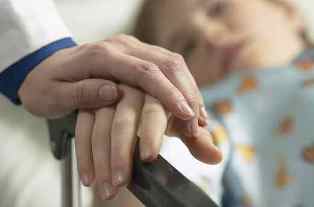
September 18th, 2010 by John Mandrola, M.D. in Better Health Network, Health Policy, News, Opinion
Tags: American Diet, Cardiology, Diet and Nutrition, Diet and Weight, Dietetics, Doctors Who Blame Fast Food, Fatness, Food and Nutrition, General Medicine, Heart Disease, McDonald's, Obesity Epidemic, Overweight, Physicians Committee for Responsible Medicine, TV Ads By Doctors
No Comments »

 I’m trying to get off the topic of fatness, but just when it seems right to move on to something less hopeless, we hear that even doctors can be felled by obesity’s resilience.
I’m trying to get off the topic of fatness, but just when it seems right to move on to something less hopeless, we hear that even doctors can be felled by obesity’s resilience.
To the Physicians Committee for Responsible Medicine, a group of well-meaning doctors who are buying expensive TV ads blaming McDonald’s for heart disease, I have just 5 words: McDonald’s is not the problem! Gosh. It’s maddening to think that such smart people could be that misguided — a whole committee of doctors completely devoid of any master-of-the-obvious is hard to fathom.
Don’t misunderstand — I’m not advocating McDonald’s food as overly nutritional, but blaming MacD’s for our obesity epidemic is like blaming guns for violence (for the record, guns scare me), brew pubs for alcoholism, or religion for war. (Sorry, that last one is a bad example.) Read more »
*This blog post was originally published at Dr John M*
September 18th, 2010 by Toni Brayer, M.D. in Better Health Network, Health Policy, News, Opinion, Research
Tags: Art of Medicine, Comforting a Patient, Dehumanization, Doctor's Hug, Emotional Component, Emotional Support, Emotional Time, General Medicine, Hand Holding, Holding a Patient's Hand, Holding Hands, Hugging, Human Compassion, Human Touch and Medicine, Lay On Hands
No Comments »

 The New York Times asks: “Should the doctor hold a patient’s hand” during emotional times? The comments that follow the short article are the most interesting. Most readers say this question shouldn’t even be asked and that human compassion should always win out. Touch is a human gesture of comfort and understanding.
The New York Times asks: “Should the doctor hold a patient’s hand” during emotional times? The comments that follow the short article are the most interesting. Most readers say this question shouldn’t even be asked and that human compassion should always win out. Touch is a human gesture of comfort and understanding.
But some readers disagree. One said she recoiled when the doctor reached out to touch her hand after telling her that her cancer had returned. It felt really creepy to her. Another asked: “What if the physician is also a Catholic priest or a pediatrician and a priest?” Whoa. It becomes more complex when you get into the psyche of the abused.
I have often thought that one of the appeals of chiropractors is that they “lay on hands” and touch and manipulate patients. With 21st century modern medicine, physicians can treat entire episodes of illness with tests, scans and robots and never actually touch the patient. No wonder people feel “dehumanized” and wonder if doctors really care. Touch and compassion are part of the entire human experience and the physician is present during a patient’s most stressful time. But wait, there’s another side. Read more »
*This blog post was originally published at EverythingHealth*
September 18th, 2010 by Bryan Vartabedian, M.D. in Better Health Network, Opinion, True Stories
Tags: 33 Charts, Doctors and Social Media, Doctors on the Internet, Doctors On Twitter, Doctors Online, Doctors Who Blog, Dr. Bryan Vartabedian, Fear Of Blogging, In Praise of Lazy, Mitch Joel, New Media, Physician Bloggers, Physician Exposure, Physicians On Twitter, Six Pixels of Separation, Socially Lazy Doctors, The Social Constitution of MD, Transparent Exposure, Twitter Doctors, Unease About Social Media
1 Comment »

When it comes to the social media landscape, doctors are scarce. Few on Twitter and fewer with blogs. Maybe we’re socially lazy. Or maybe we’re just taking it all in.
Mitch Joel of Six Pixels of Separation caught my eye last week with his article “In Praise of Lazy” and reminded me that despite the how we may want to see things, most of us aren’t interested in creating content. In fact, he describes a 1 percent rule — only 1 percent of the audience will take time to actually create content.
I suspect that if we were to take the time and do the survey properly, we would find that physicians too are largely new media consumers — or spectators, joiners or collectors in the Forrester sense of the word. Physicians, in fact, might adhere to something of a 0.1 percent rule. Like Peter Sellers as “Chance the Gardner” in the 1979 classic, Being There, we “like to watch.” Read more »
*This blog post was originally published at 33 Charts*
September 17th, 2010 by DavedeBronkart in Better Health Network, Health Tips, News, Opinion
Tags: A Good Doctor, e-Patients.net, ePatient Dave, Family Medicine, Female Doctor, General Medicine, Internal Medicine, Medical Credentials, National Public Radio, NPR, Picking A Better Doctor, Primary Care, Scott Hensley, U.S. Medical Residencies, U.S. Medical Schools, What Makes A Slightly Better Doctor
No Comments »

On Monday, NPR’s Scott Hensley posted:
“Between the Internet and all the data insurance companies and the government collect on doctors, you’d think it would be a lot easier than it used to be to find a good one. But it’s not.”
Sound familiar around here? See his thoughts: “3 Tips For Picking A Slightly Better Doctor.”
(Thanks to friend Cindy Johnson for the tip.)
*This blog post was originally published at e-Patients.net*
September 17th, 2010 by DrWes in Better Health Network, Humor, News, Opinion
Tags: Doctor's Job, Doctor's Life, Doctors Are Humans, Doctors' White Coats, Dr. Sally Satel, Empathy, General Medicine, Humanistic Qualities of Medicine, Humanistic Side of Medicine, Humanizing Medicine, Humility As A Doctor, Life Lessons For Doctors, Medicine and Humanism, Real Life, Wall Street Journal, White Coat Ceremonies
No Comments »

An excellent opinion piece by Sally Satel, M.D., a psychiatrist, appeared in the Wall Street Journal this morning about white coat ceremonies as ways to reinforce the humanistic qualities of medicine. The best part, however, was this perspective:
But the question of whether empathy can be taught—and, in particular, whether a white-coat ceremony is a good means for promoting that virtue—is a matter of some debate.
Judah Goldberg, a young doctor at Chilton Memorial Hospital in New Jersey raises an intriguing paradox. He asks how the white coat can bring doctors closer to the subjective experience of patients when, as an icon of the profession, it is meant to isolate and distinguish them from the lay community.
“To the extent that empathy can be taught through a ritual,” Dr. Goldberg told me, “a hospital gown, the common garb of human frailty, would be more fitting than a distancing white coat.”
I must say, the thought of everyone seeing each others’ posterior sides as they paraded across the stage at such a ceremony did make me smile. Read more »
*This blog post was originally published at Dr. Wes*
 I’m trying to get off the topic of fatness, but just when it seems right to move on to something less hopeless, we hear that even doctors can be felled by obesity’s resilience.
I’m trying to get off the topic of fatness, but just when it seems right to move on to something less hopeless, we hear that even doctors can be felled by obesity’s resilience.




 The New York Times asks: “Should the doctor hold a patient’s hand” during emotional times? The comments that follow the
The New York Times asks: “Should the doctor hold a patient’s hand” during emotional times? The comments that follow the 










